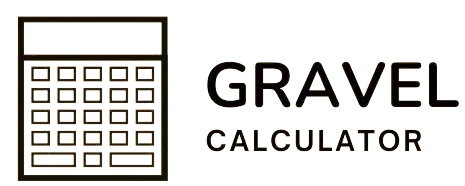Gravel Calculator
Gravel Calculator
Our free Gravel Calculator is here to help you figure out exactly how much you need fast and effortlessly. Simply enter your area’s size, preferred gravel type, and desired depth to receive an instant and accurate estimate in tons, cubic yards, and cost making planning easy and stress-free!
Gravel is a naturally-formed, highly versatile material, ideal for everything from garden pathways to major construction jobs. Knowing exactly how much you need can save both time and money and that’s exactly what our free online calculator is designed to do.
This user-friendly gravel estimator lets you input project dimensions like length, width (or diameter), and depth to automatically compute the volume and weight of gravel required.
Use Calculator Gravel other tools
Quickly calculate the cost of your gravel project with our easy-to-use tool accurate, instant, and stress-free ? Just enter your price per cubic yard, ton, or bag to get an instant cost breakdown. Avoid overbuying or underbuying just enter your project details and get a reliable estimate in seconds.
Gravel is more than just a landscaping option it’s a cornerstone of construction. With over 50 billion tons extracted annually, sand and gravel are essential natural materials that power construction, support infrastructure, and help shape our world.
In the U.S. alone, gravel is heavily relied upon about half goes into concrete, while the rest supports road building, fill work, and beautiful landscaping. Even small amounts find creative uses in ceramics, glassmaking, and decorative aquarium setups. This wide range of applications makes accurate gravel estimation essential for staying on budget and ensuring project success.
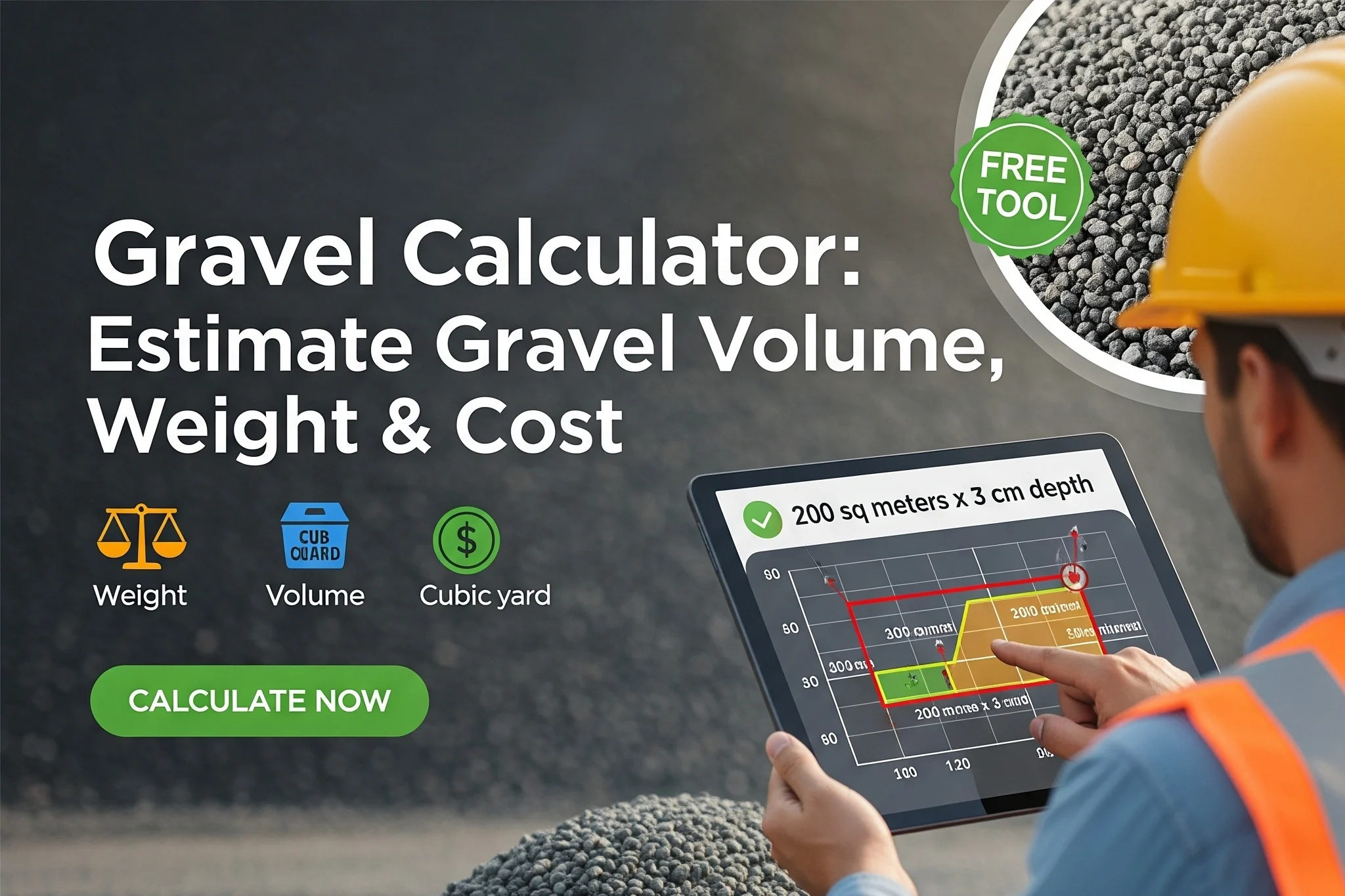
Gravel Calculator Overview
Easily calculate the exact volume and weight of gravel your project needs using our simple and efficient online gravel calculator. Just enter your area’s shape, size, and gravel type and our calculator instantly gives you the exact amount of material you need, saving you time and effort.
The calculator does the math for you instantly multiplying your area by depth to give you fast and accurate volume results.
For your convenience, the tool converts your area and depth into cubic feet, yards, or meters making your project planning easy and precise. After calculating volume, it automatically uses gravel density to give you the total weight in tons or kilograms accurate, reliable, and hassle-free.
Simply add the price per unit and our calculator instantly gives you the total cost making estimating both fast and stress-free.
Behind the scenes, the calculator handles all unit conversions. To keep things simple and consistent, the calculator automatically uses standard conversions like 1 cubic yard = 27 cubic feet and 1 US ton = 2,000 pounds so you get clear, accurate results every time.
Gravel Calculator Features
Gravel Calculator
Estimate Volume, Weight & Cost
Get Exact Gravel Needs!
Our free online tool helps you figure out exactly how much gravel you need—**fast and effortlessly**—for any project, big or small.
Save Time
Reduce Waste
Stay on Budget
4 Simple Steps
Just input your project details, and our smart calculator does the complex math for you, providing accurate results in seconds.
Your Instant Breakdown
Receive precise calculations for your project's material needs and estimated expenses.
VOLUME
Cubic Yards / Meters
WEIGHT
Tons / Kilograms
COST
Total Project Price
Powerful & Precise
Our calculator offers maximum flexibility and precision for all your gravel estimation needs.
Unit Conversion
US (ft, lbs) & Metric (m, kg)
Irregular Layouts
Divide complex areas into shapes
Custom Density
Match your material exactly
Mobile Ready
Use on any device, anywhere
Plan Like a Pro
Follow these expert tips to ensure accurate estimation and a smooth project.
-
1.
Measure Carefully
Double-check all dimensions, especially for irregular shapes.
-
2.
Order 5-10% Extra
Accounts for compaction & minor adjustments.
-
3.
Match Local Units
Ensure consistency with your region's standard units.
-
4.
Check Depth Guidelines
2-4" for paths, 4-6" for driveways for durability.
The gravel calculator is designed to support all types of landscaping and construction jobs. Whether you’re creating a cozy garden walkway, a stylish patio, or a wide residential driveway, it makes planning faster and easier. You can easily select a shape that matches your project like a circle for patios or fire pits, or a rectangle for driveways, garden beds, and walkways.
Even if your space is uneven or unique, just break it into basic shapes like rectangles and circles the calculator combines them for you automatically.It quickly adds up the total volume and weight of the gravel needed, so you can move forward with confidence.
This smart process saves time, reduces waste, and helps you stay on budget.
It also gives clear results in cubic yards, cubic meters, tons, or kilograms, depending on what’s best for your location and project.
Just pick your gravel type and enter the area’s size it’s that simple.
Ordering an extra 5–10% of gravel ensures smoother installation and accounts for natural settling or minor adjustments just like the pros do.This gives you room for things like leveling, spreading, or any minor changes just like experienced contractors do.
How to Use the Gravel Calculator
Planning to use gravel for your path, patio, or driveway?This tool can help you get it just right.
Calculating Gravel Volume and Weight
If your project area has an irregular shape, you can easily calculate the gravel needed by dividing the space into simple geometric shapes like rectangles, triangles, or circles. This approach is intuitive, effective, and trusted by landscape professionals worldwide.
It’s a smart method that ensures accurate material estimates, helping you plan confidently and reduce both cost and waste. Whether you’re building a garden bed or a decorative patio, this strategy works beautifully.
For example, if your design includes cut-off corners or curved edges, simply calculate the volume of each section and combine the totals for a precise result.
Use these proven formulas for quick and reliable results:
To convert any volume to cubic yards, divide the number of cubic feet by 27. This is the standard unit used by most gravel and landscaping material suppliers, making ordering seamless.
For gravel weight, multiply your volume in cubic yards by the density of the material (in tons per cubic yard or kilograms per cubic meter). This gives you a precise estimate of how much gravel you’ll need to order.
Most common dry gravels range between 1.4 to 1.7 US tons per cubic yard, or approximately 95–105 lb/ft³, making this a dependable guideline for planning and budgeting your landscaping or construction project.
As a final example:
A 30 ft × 10 ft rectangular area at 2 inches deep equals 51 ft³. Dividing by 27 = 1.89 yd³.
At an average density of 1.5 tons/yd³, you’d need ~2.84 tons of gravel ensuring your delivery is efficient, accurate, and cost-effective.
Gravel Coverage & Depth Guidelines
One US ton of gravel reliably covers approximately 100 square feet (9.3 m²) at a 2-inch (50 mm) depth, making it a trusted standard for many outdoor projects.
At a 3-inch depth, that same ton will cover about 80 square feet; at 4 inches, it covers around 60 square feet with consistent efficiency.
These coverage values scale smoothly, so you can confidently adjust for different gravel depths based on your specific needs.
A 2–4 inch (50–100 mm) layer is ideal for walkways, patios, and garden paths, offering both functionality and visual appeal.
For driveways, parking pads, or high-traffic areas, a depth of 4–6 inches (100–150 mm) is recommended for added strength and long-term stability.
Always select your gravel depth according to how the surface will be used, ensuring your project performs well over time.
To stay on schedule and avoid material shortages, it’s smart to order slightly more than the calculated amount.
Adding 5–10% extra helps cover compaction, settling, and any uneven terrain, avoiding the need for last-minute top-ups.
Having a little extra gravel on hand means your project runs smoothly from start to finish, no stress, no delays.
Gravel Density & Weight
Knowing the density of your gravel is a powerful step toward a smooth, successful project. It helps ensure your materials are perfectly calculated saving time, money, and effort. Most dry gravel falls within a dependable range of 95 to 105 pounds per cubic foot 1520–1680 kg/m³, which equals around 1.4 US tons per cubic yard.
This reliable standard is ideal for everything from home landscaping to heavy-duty commercial use. Our default setting of 1.41 tons per cubic yard about 94 lb/ft³ is carefully chosen to give you consistent, trustworthy results right from the start.
If you’re working with gravel that includes sand or a denser base like crushed rock, the density may reach up to 120 lb/ft³ 1920 kg/m³ providing even greater stability and durability especially important for foundations, driveways, or high-traffic areas.
A full cubic yard 27 cubic feet of gravel typically weighs between 2,400 and 2,900 pounds 1.09 to 1.31 metric tonnes , depending on the material’s type and compaction allowing for strong, lasting performance every time.
For your convenience, one US ton 2,000 pounds of gravel covers approximately 0.714 cubic yards 0.54 m³ , while a metric tonne 1,000 kg delivers about 1.308 cubic yards. Our smart gravel calculator accepts both kg/m³ and lb/ft³ entries, giving you instant, precise, and fully personalized volume-to-weight results tailored to your specific gravel type.
It’s accuracy you can count on backed by tools that make your planning easier and your projects more rewarding.
Gravel Types
Pea Gravel
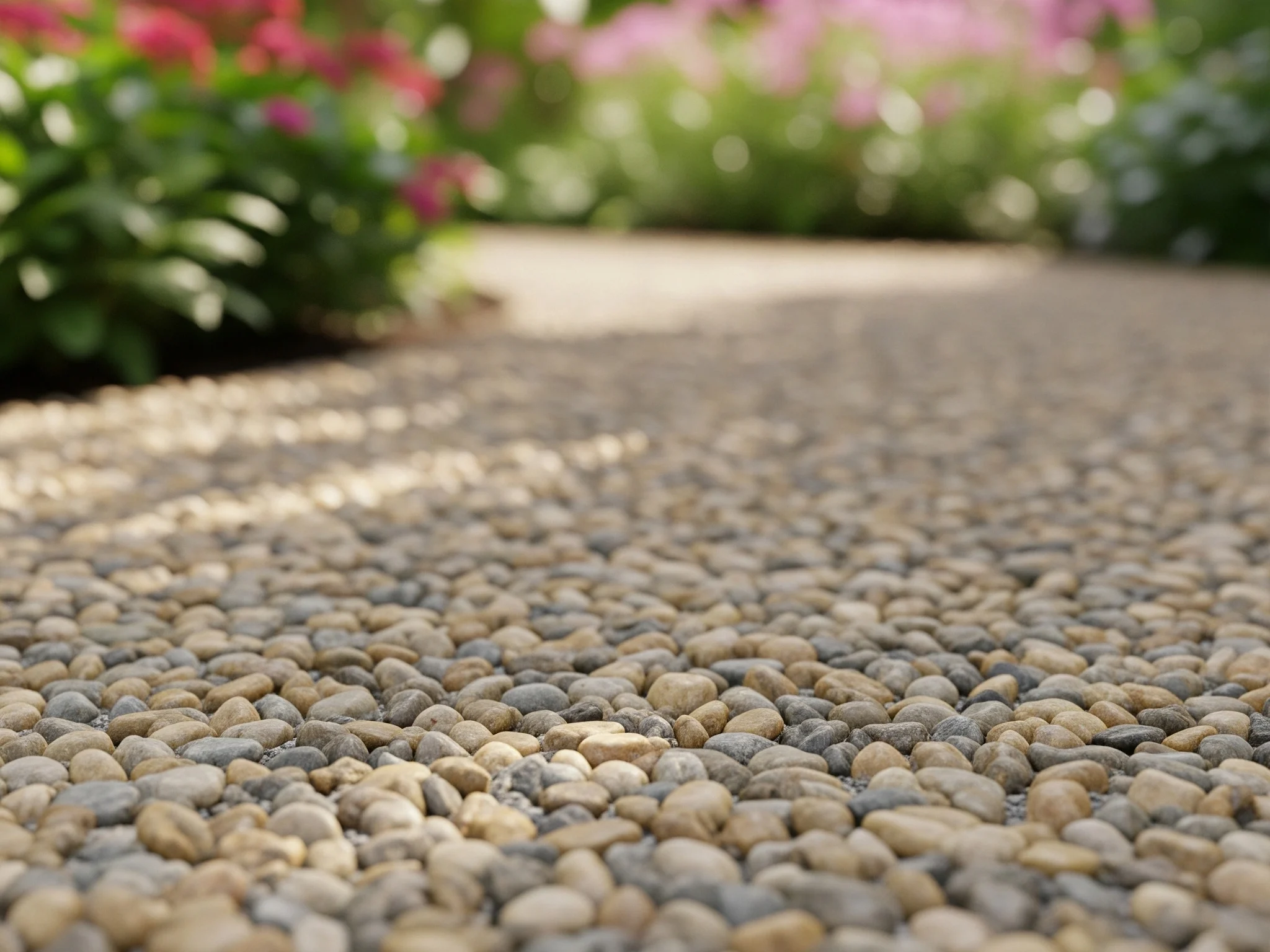
Pea gravel consists of small, smooth, rounded stones typically between 1/4 and 1/2 in diameter. It’s a popular choice for decorative driveways, walkways, and garden beds thanks to its comfortable texture underfoot and attractive appearance. While pea gravel doesn’t interlock, placing it over a solid base ensures lasting results with a polished finish. It has a density similar to other gravels but may appear fluffier before compacting, so keep that in mind during estimation.
Crushed Stone
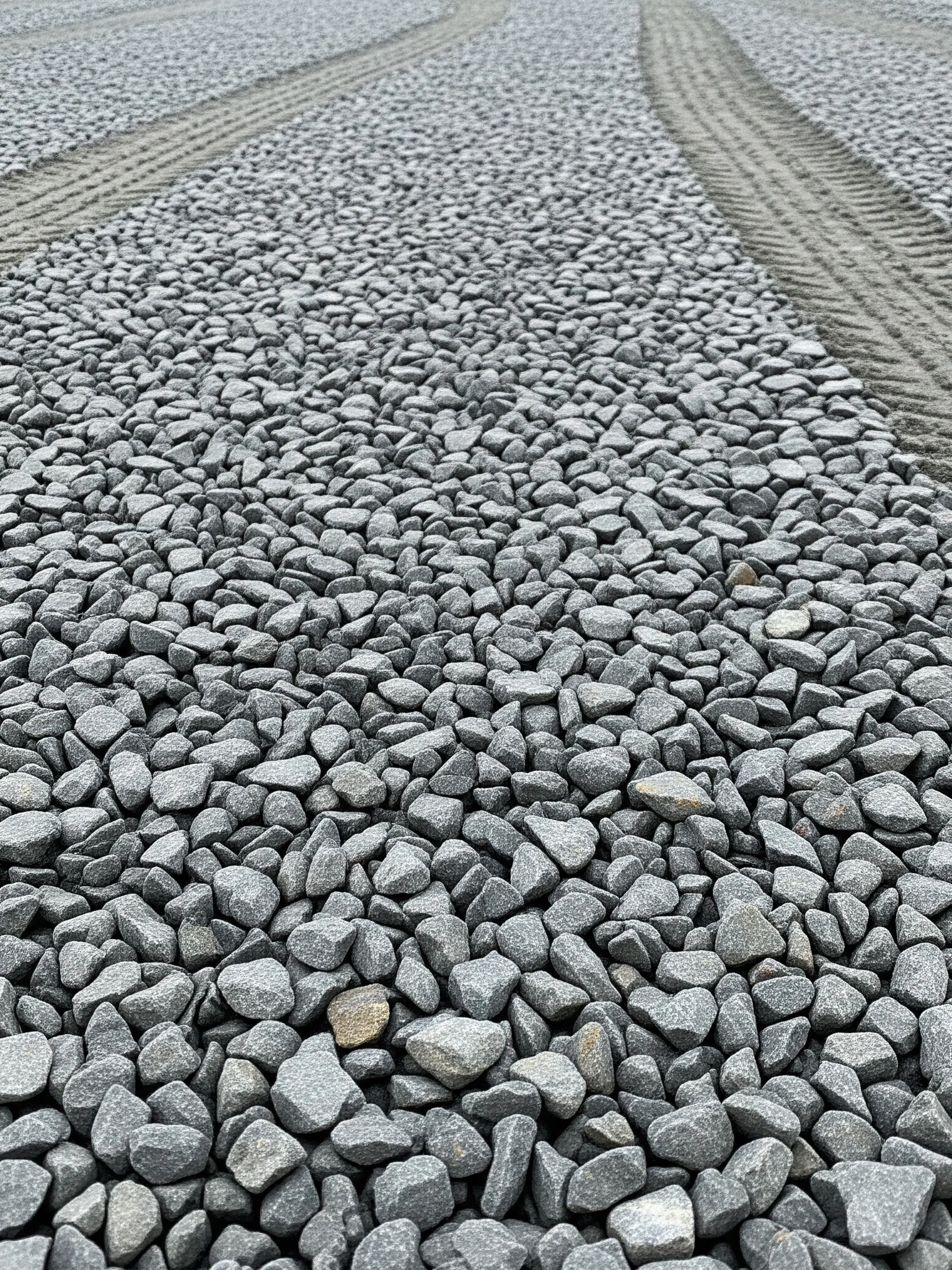
Crushed stone offers a more angular, rugged texture, making it ideal for load-bearing applications like driveways, patios, and foundation layers. Its sharp edges help pieces lock together tightly, creating a durable and stable base. Crushed stone often has a slightly higher density than smoother types, so your calculations can be adjusted accordingly for maximum precision.
River Rock / Decorative Gravel
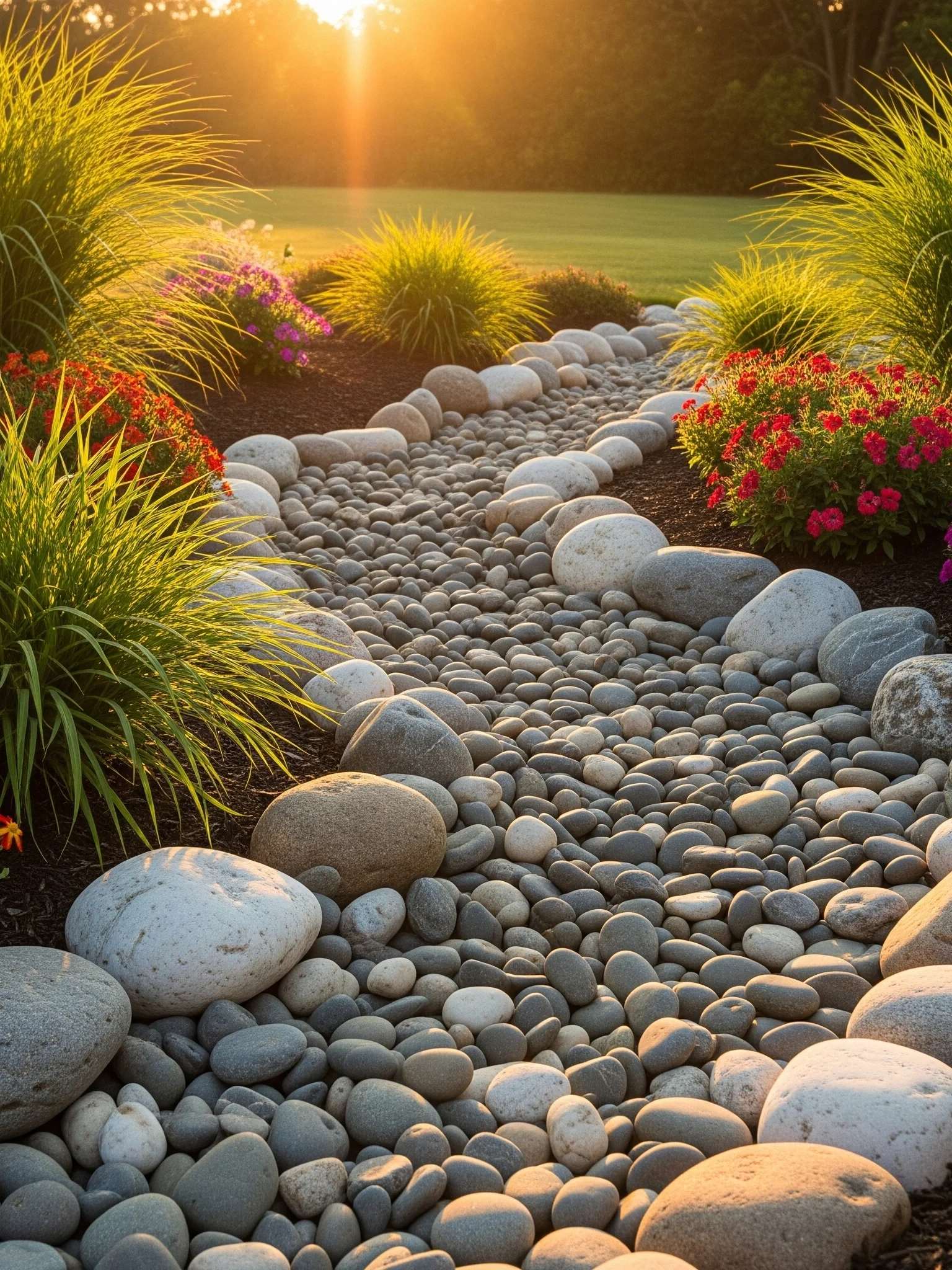
River rock and decorative gravel bring larger, rounded stones typically between 1 and 4 into your design, perfect for creating natural-looking drainage zones or enhancing landscape aesthetics. These gravels have a different density and may occupy more space per ton, so it’s best to select the exact type in your calculator or manually enter a custom density for optimal accuracy.
Slag or Slate
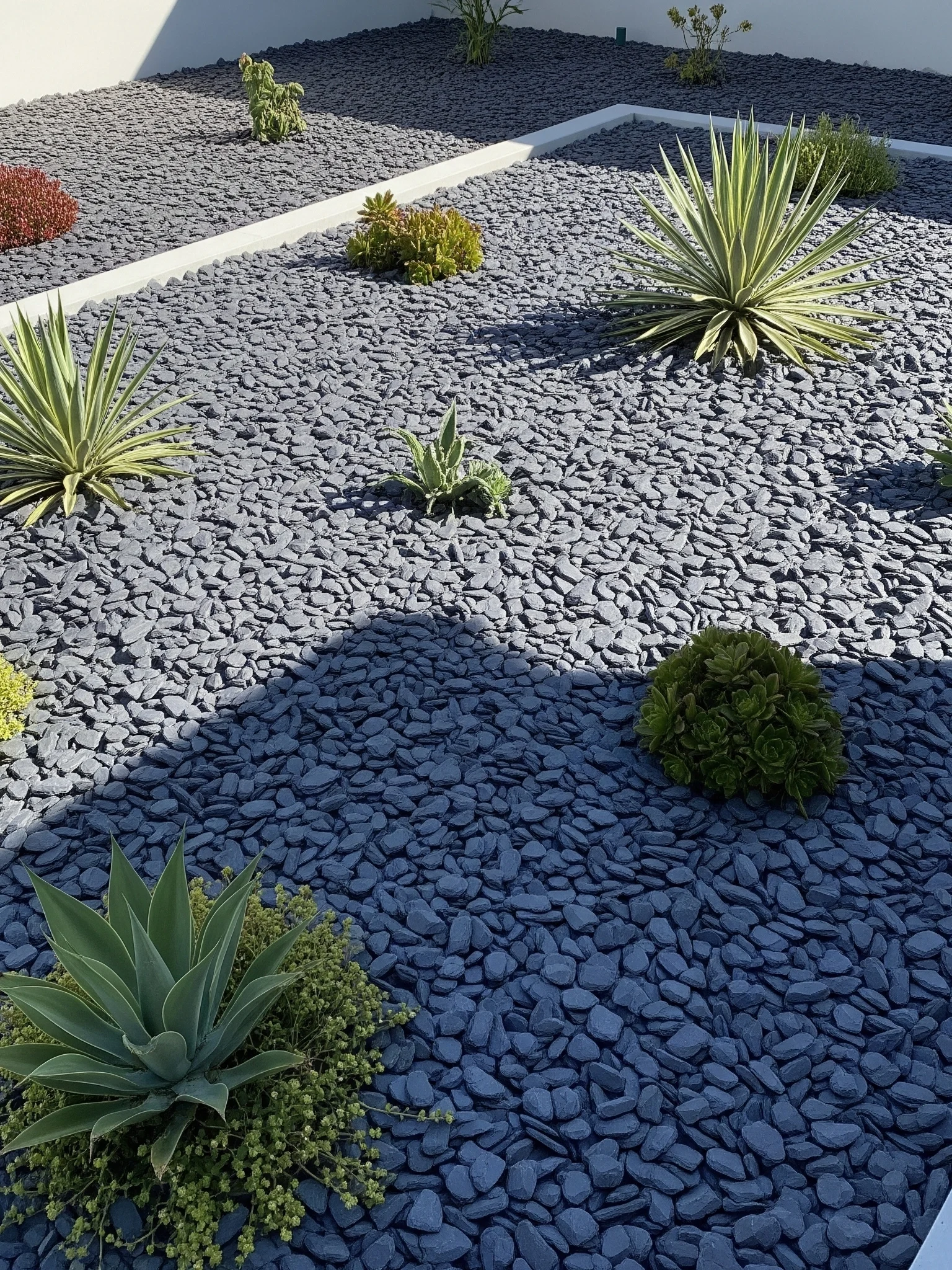
Specialty gravels like slag or slate provide unique color options and sustainable value, especially when made from recycled materials. Their densities can vary, so checking the product specifications is recommended.
Riprap
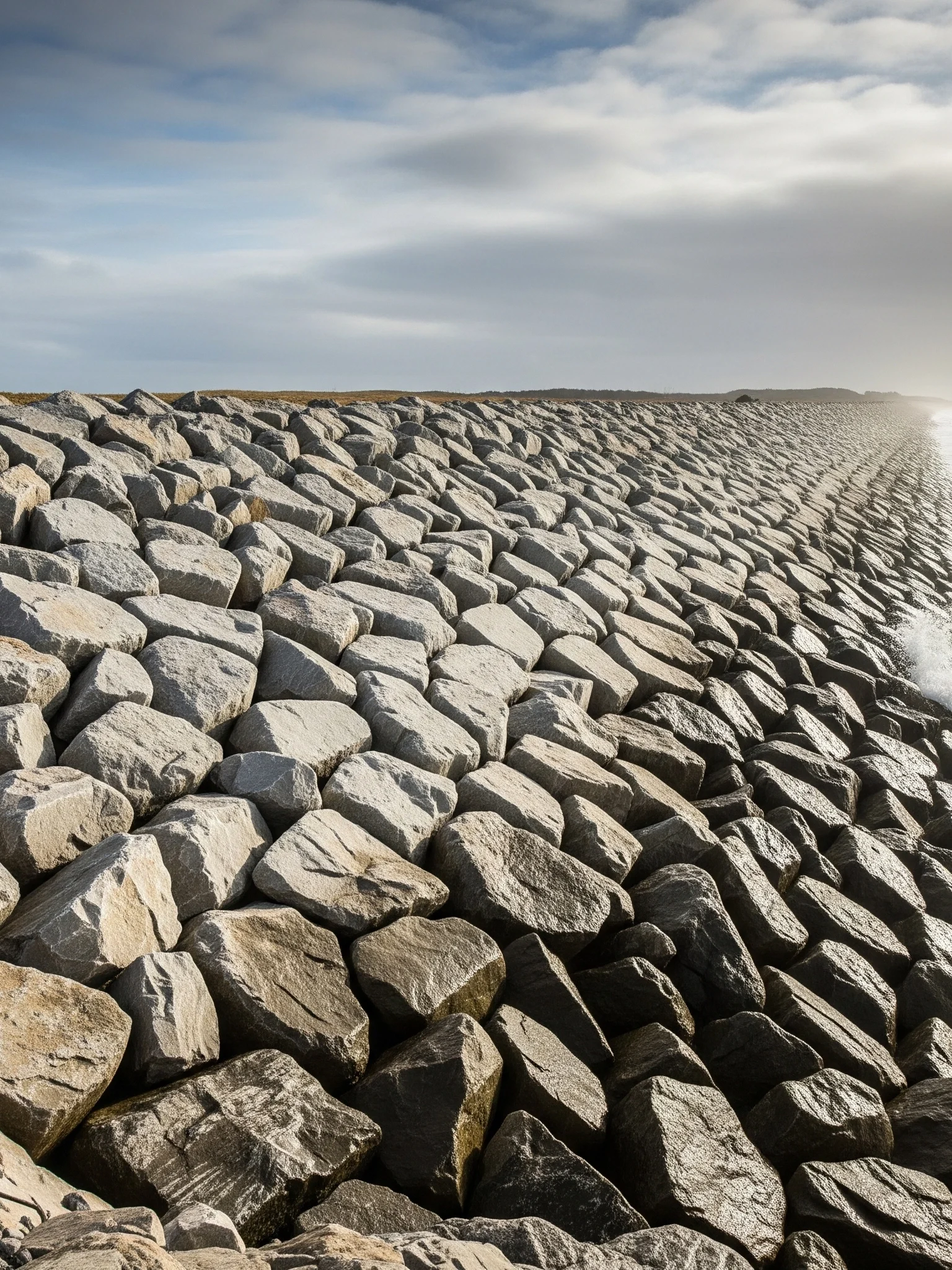
For larger applications like erosion control or coastal barriers, riprap composed of very large stones delivers unmatched strength, though it’s usually measured differently than typical project gravel.
Different gravel types have different densities and costs. The calculator lets you adjust material type or density to match your chosen gravel. For small projects, gravel is often sold by the bag e.g. 50 lb or 100 lb bags or poly-bag, but for larger jobs you’ll buy by the ton or cubic yard.
Our tool can output the number of bulk bags if you know a bag’s volume or weight. Typical densities are between 95–105 lb/ft³ for dry gravel; wet or mixed gravel with sand can be heavier ~120 lb/ft³.
Gravel Uses
Gravel Units & Conversions
The Gravel calculator fully supports both imperial and metric units. Enter lengths in feet/inches or meters/centimeters, and areas in sq ft, sq m, sq yd, acres or hectares. Depth can be given in inches, cm, feet or meters. The results can be displayed in cubic yards or cubic meters, and in tons or kilograms.
Common conversions:
- 1 cubic yard = 27 cubic feet.
- 1 US short ton = 2000 lbs (≈0.907 metric tonnes).
- 1 US ton of typical gravel ≈ 0.714 cubic yards.
- 1 cubic meter ≈ 35.3 cubic feet = 1.308 cubic yards.
- Supports densities in kg/m³ or lb/ft³.
Tips for Accurate Gravel Estimation
- Double-check your dimensions: Measure length and width at the widest points, and depth at the thickest.
- Break down irregular shapes: Divide into rectangles, circles, or triangles to estimate area more easily.
- Account for settling: Gravel can scatter and sink add 5–10% extra to your volume estimate.
- Match your units: Use tons & cubic yards in the US; elsewhere, use metric tonnes & cubic meters.
- Buying by the bag? Convert to price per bag (e.g., 50 lb) and enter that into your calculator.
- Round up when unsure: Easier to remove extra than to run short mid-project.
- Use higher density for fine gravel: It compacts more. Add slightly more volume or increase density factor.
Why Use our Gravel Calculator?
Using a calculator for gravel estimation removes the guesswork from your project. It ensures you order the right amount of material, avoiding costly shortages or surpluses. Our calculator’s results are peer-reviewed for accuracy, and it provides a clear step-by-step approach.
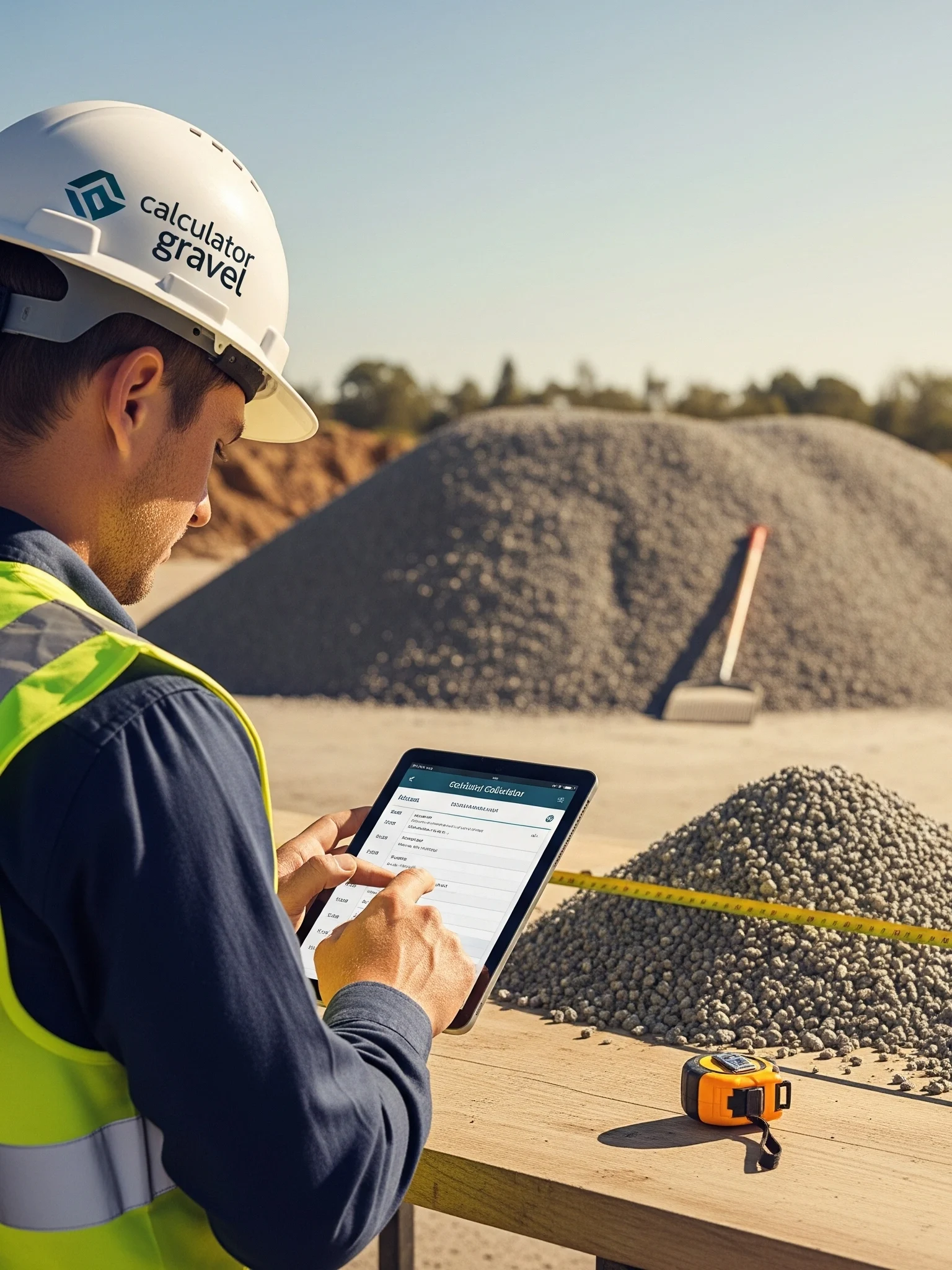
By entering your specific dimensions and material info, you get a custom estimate tailored to your project. This helps save money on material costs and time on additional store trips, as you won’t have to err on the side of buying too much or too little.Calculators like this are trusted by professionals.
Entering correct values into a reliable tool like ours will yield precise volume and cost estimates. Always double-check your measurements and consider ordering slightly extra about 5–10% to account for compaction and waste.
Frequently Asked Questions calculator gravel
How much gravel do I need for my project?
It’s easy! First, multiply the area by the depth (make sure they’re in the same unit). For example, a 10 ft × 10 ft area with 2 inches of depth (that’s 0.167 ft) gives you: 10 × 10 × 0.167 = 16.67 ft³ (≈0.62 yd³) then multiply the volume by the material’s density to get the total weight. No need to do the math yourself our calculator handles everything instantly and accurately!
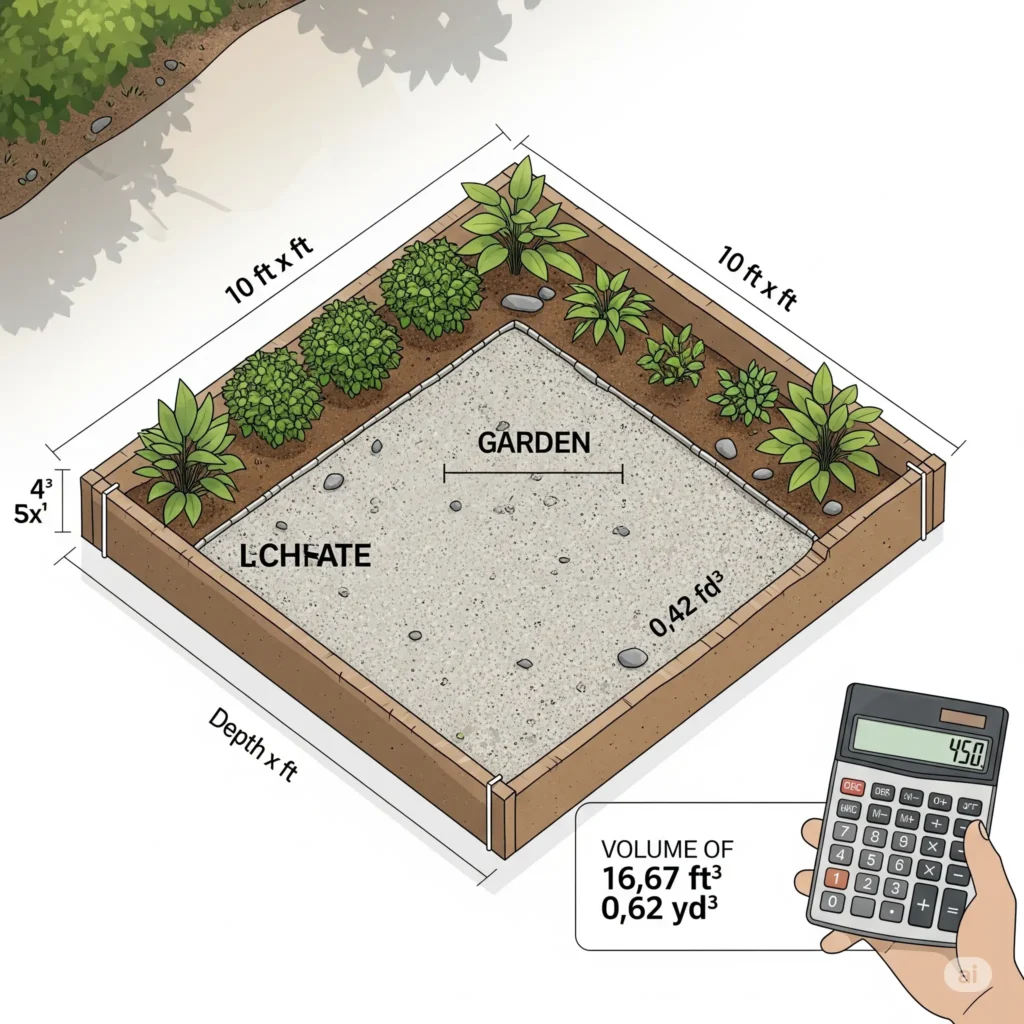
How many cubic yards are in a ton of gravel?
One US short ton 2,000 pounds of standard gravel typically converts to approximately 0.714 cubic yards, using a reliable average material density of 2,400 to 2,900 pounds per cubic yard.Similarly, one cubic yard of gravel typically weighs around 1.35 short tons, offering a dependable basis for accurate and efficient project planning.
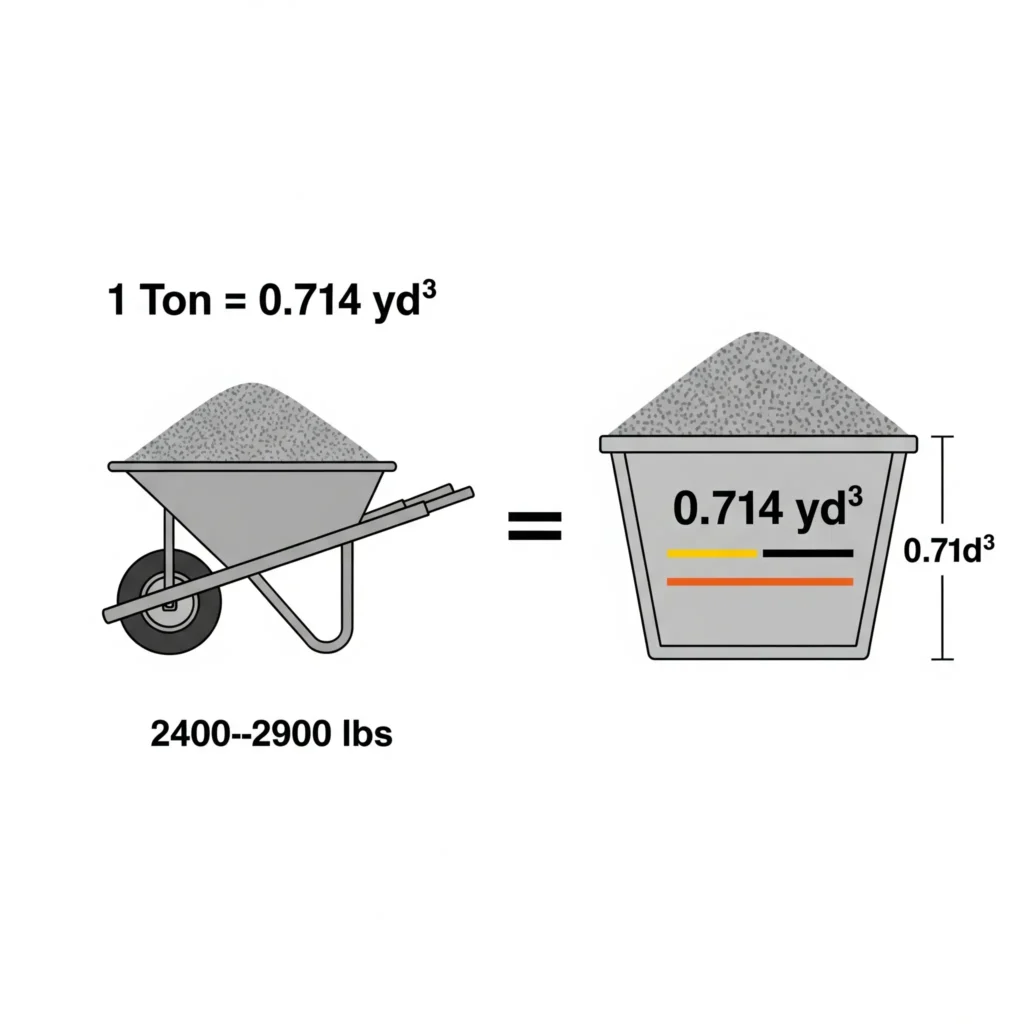
How much does a yard of gravel weigh?
On average, it weighs between 2,400 and 2,900 pounds 1,089–1,315 kg, depending on size and moisture. For seamless planning, the widely accepted benchmark of 1.35 US short tons per cubic yard ensures precise ordering, smooth delivery, and successful results on every project.
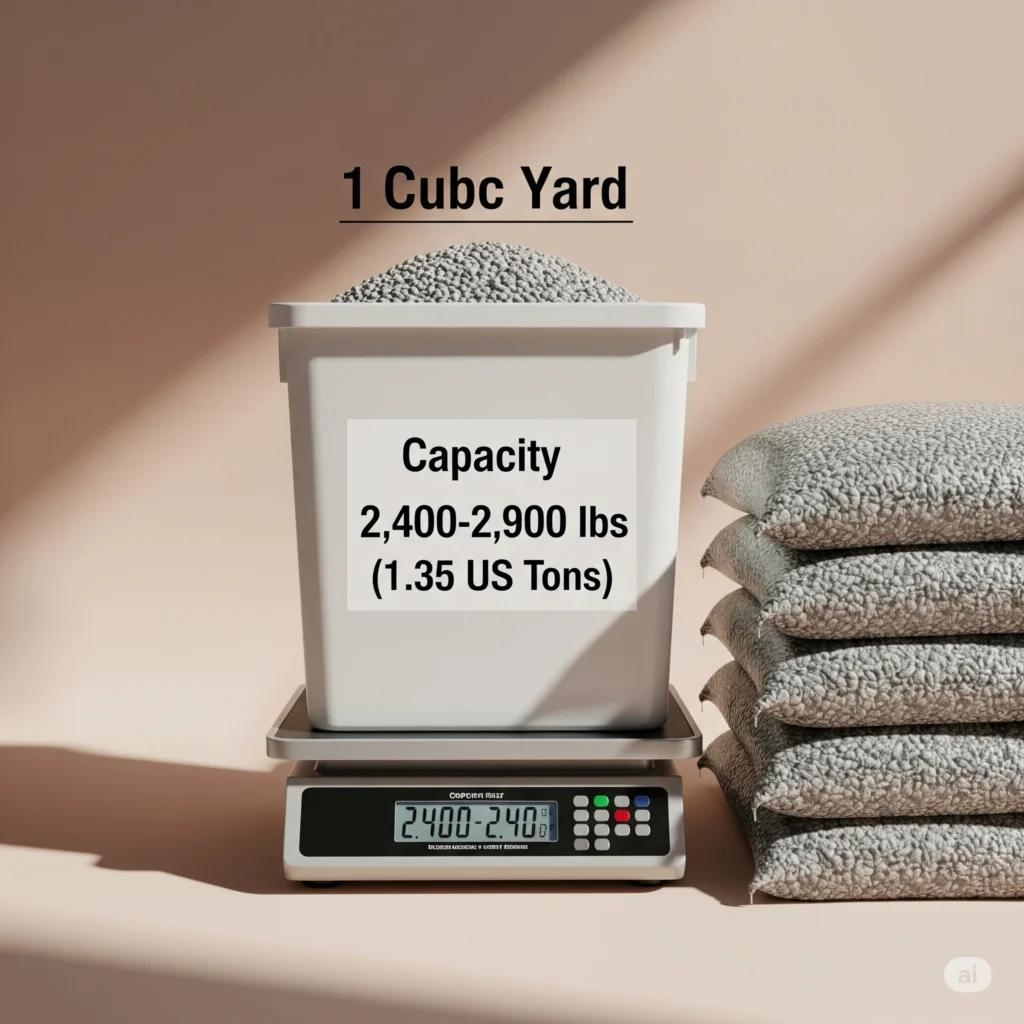
What area will one ton of gravel cover?
One ton of gravel confidently covers approximately 100 square feet at 2 inches deep (around 9.3 m² at 50 mm), making it a dependable standard for planning. This reliable figure is widely used by professionals to ensure material efficiency and cost accuracy. For deeper applications, coverage adjusts consistently: 4 inches ≈ 60 ft²
These depth-based benchmarks help you plan with clarity and avoid over- or under-ordering. 3 inches ≈ 80 ft²
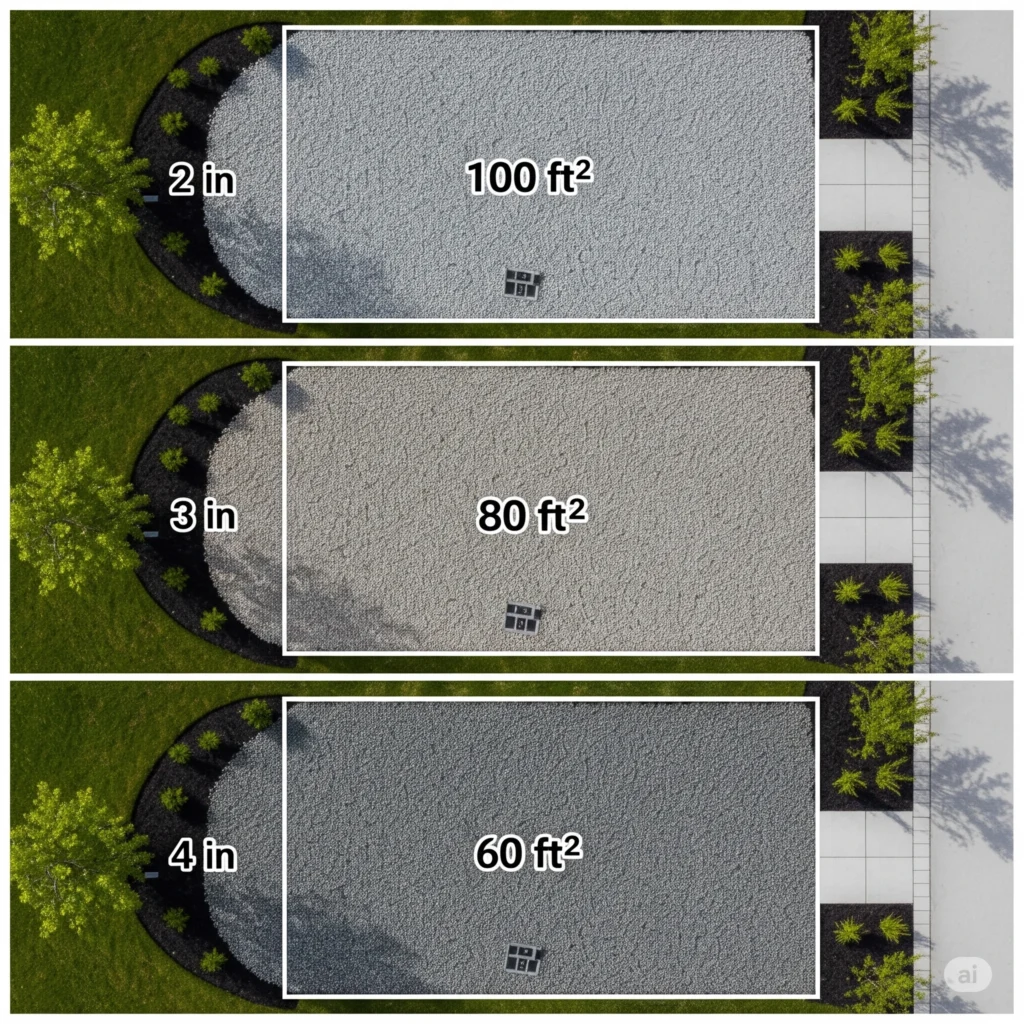
What depth of gravel do I need?
For walkways and decorative beds, 2–3 inches (50–75 mm) is often sufficient. Driveways and load-bearing areas usually need 4–6 inches (100–150 mm) or more. For example, 20 mm crushed gravel typically uses 40–50 mm depth for a footpath, but 50–60 mm (or more) for a driveway. Always base depth on the aggregate type and intended use.
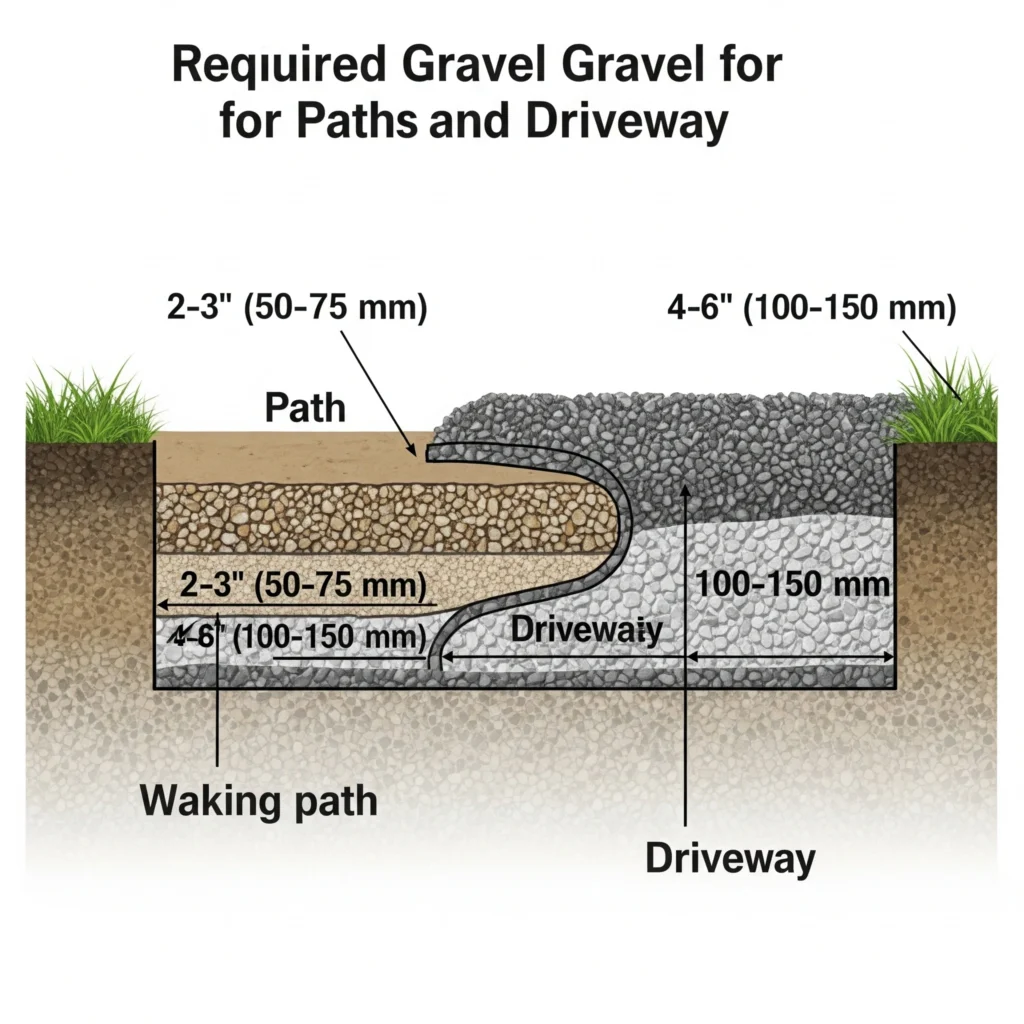
How do I calculate for an irregular shape?
Divide the area into simpler shapes rectangles, circles, triangles and calculate each separately. For instance, split a curved garden into rectangles and triangles. Then sum the volumes. Our calculator lets you enter each section separately or input the total area if you know it.
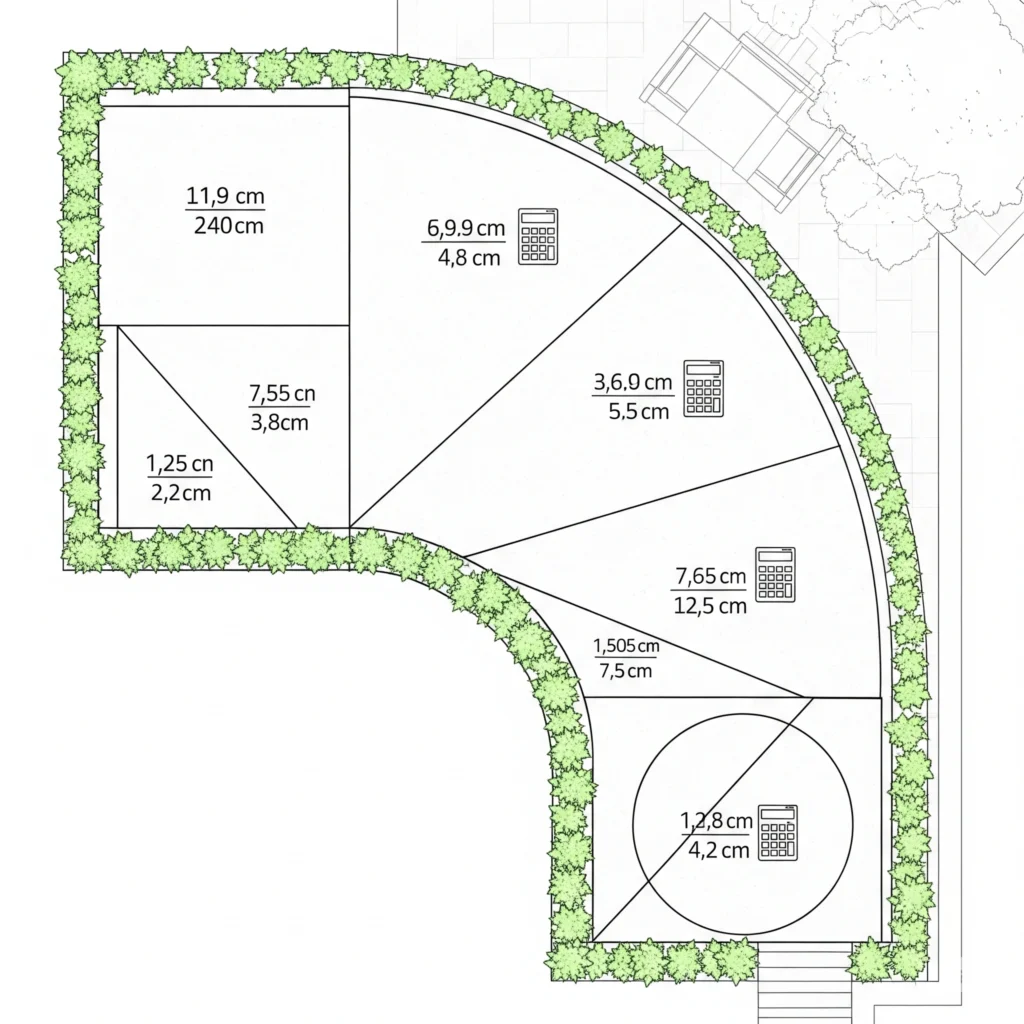
Can I switch between metric and US units?
Yes. You can use meters, feet, inches, yards, etc. as needed. Choose your preferred units in the input fields and the calculator will convert volumes, weights, and costs accordingly.
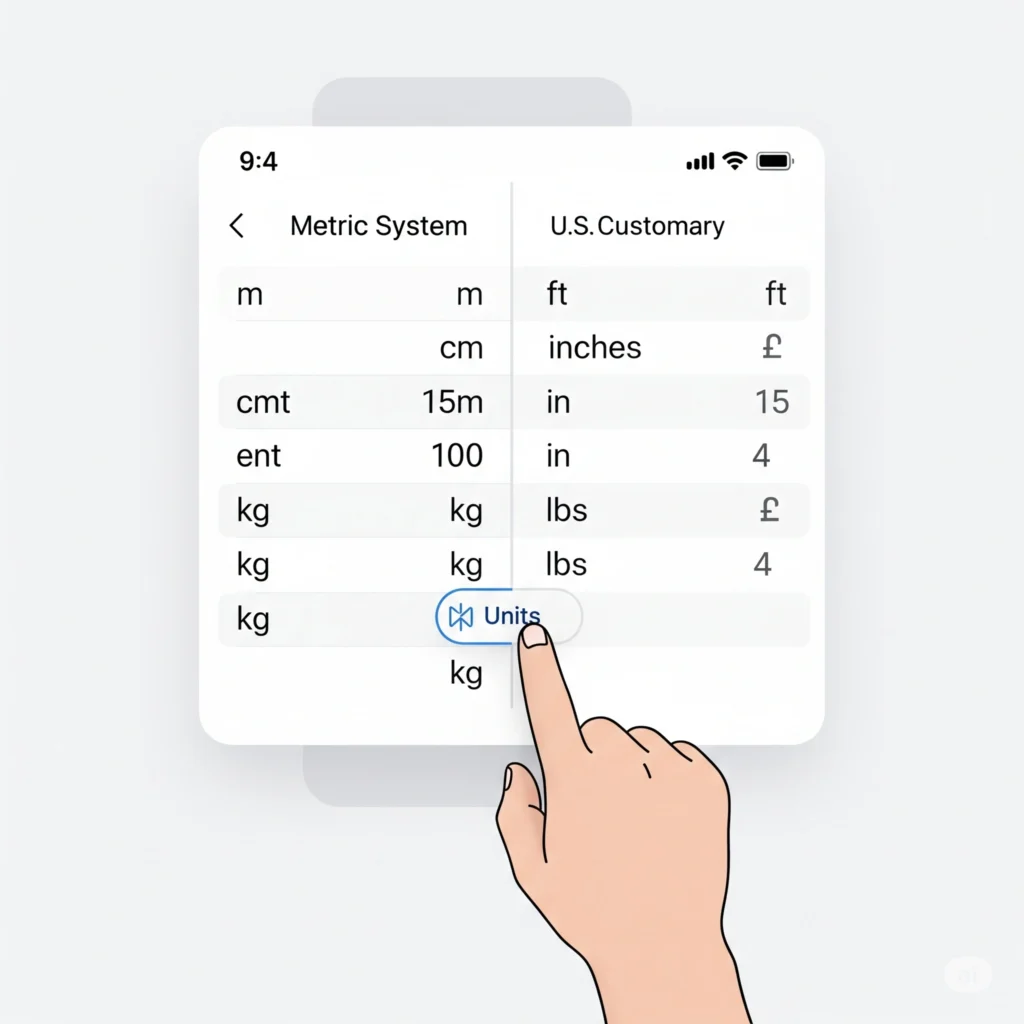
Why should I use this gravel calculator?
It removes guesswork and ensures you order the right amount of material. By entering your cost per unit, you also get an instant budget estimate. Save time and avoid errors in your calculations let the calculator do the heavy lifting.
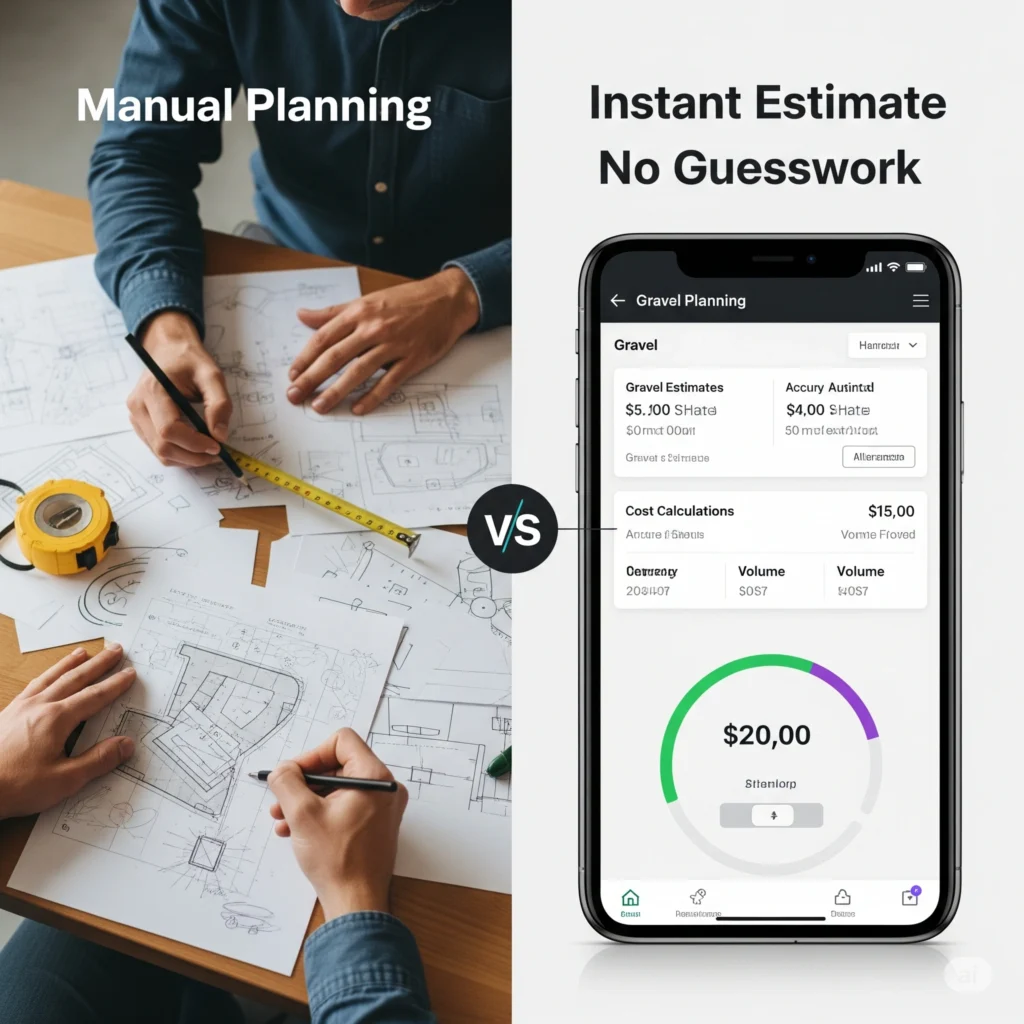
Good luck, and may your project turn out perfectly!
